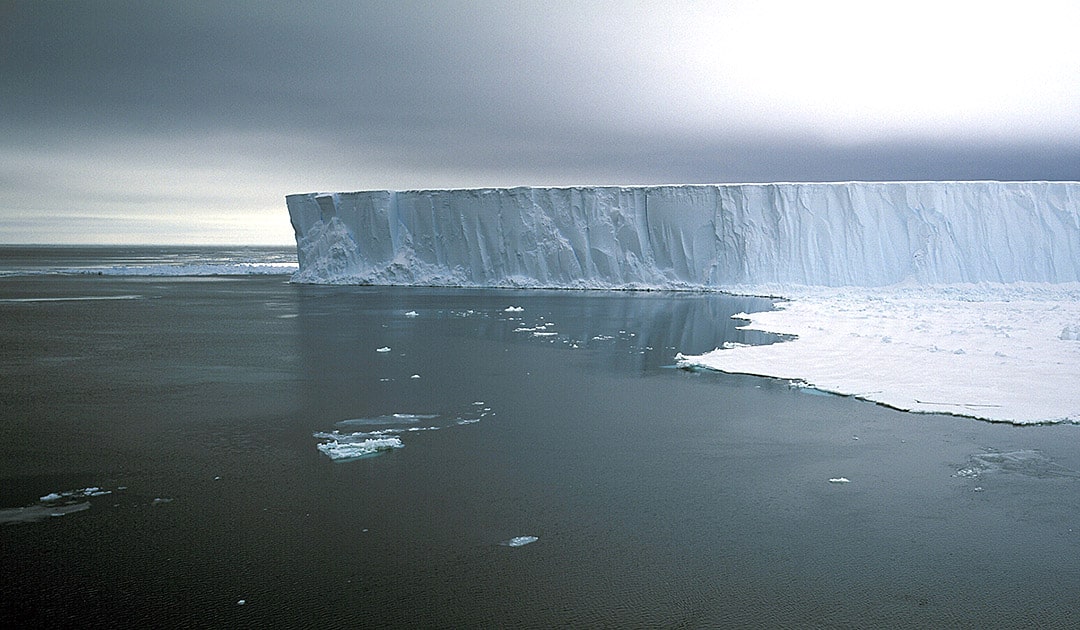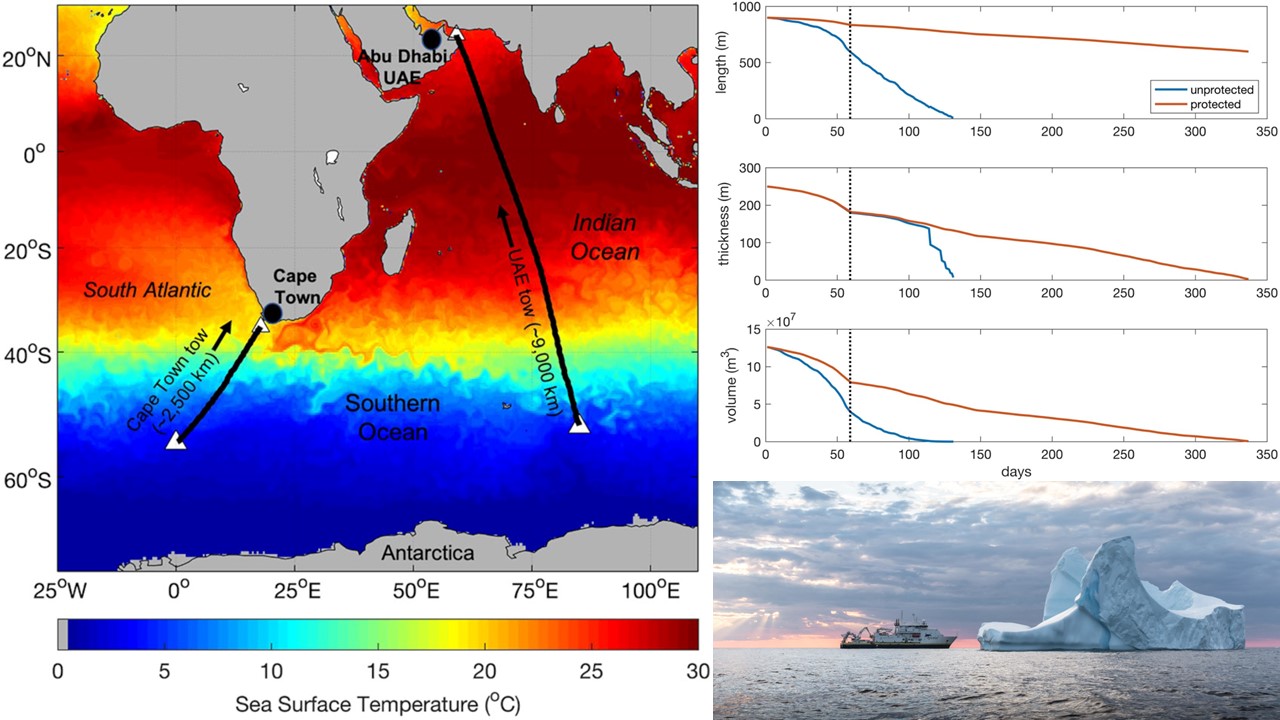
Towing icebergs could probably alleviate the lack of fresh water in the arid region of Cape Town. But there are too many uncertainties for this to be possible yet. Alan Condron publishes new results on this subject, which was born in the 1970s.
To provide water to the city of Cape Town and meet the needs of its inhabitants for 1 year, it would be necessary to fetch with 3 tugs, an iceberg 700 meters long and 250 meters thick, at the level of the 50th parallel south, estimates Alan Condron researcher at the Woods Hole Oceanographic Institution based in the United States of America. Results published this month in the scientific journal Nature.
The idea of going to the ice in Antarctica, to exploit its fresh water, goes back to the first Conference on Iceberg Utilization in 1977. Prince Mohammed bin Faisal Al Saud of Arabia (1937-2017), the main interested party, said: “We want to confirm our opinion, and try to prove that it is possible to tow icebergs from Antarctica to the drylands”.
Finally, the projects of transferring the icebergs to the Arabian Peninsula did not succeed. “The entrances of the Red Sea and the Gulf of Oman are too high to accommodate icebergs that have a 200 meter draft,” said Georges Mougin, an engineer specializing in iceberg towing, to TV5Monde in 2011. Alan Condron demonstrates this in his study. The iceberg of such a project should measure 2 kilometers long, 600 meters thick. The motive power to move it would be equivalent to around fifteen ocean-going tugs. “The effort probably isn’t worth it,” says the researcher.

“After the intense 2018 drought in Cape Town, I thought it would be a good idea to look at this again,” the oceanographer tells us. In 2021, the World Economic Forum lists iceberg towing as one of the top 5 methods to combat drought and water stress. “Nick Sloane is the South African engineer, famous for having refloated the Costa Concordia, stranded in the Mediterranean. Now a manager of unusual maritime projects, he is increasingly interested in the issue of icebergs to supply Cape Town. This is also what motivates this paper,” explains Alan Condron.
Technically, there are many unknowns in this business. Tugs are already working on icebergs to avoid collisions with oil platforms. But this has never been practiced over several thousand kilometers. “Over long distances, the icebergs are likely to turn over and that is very dangerous. My computer simulations don’t necessarily explore these issues,” he says.
Ice melts faster in winter
Understanding whether the business is viable is first about understanding how fast the iceberg melts during transport. “My model simulates the ocean circulation around the globe, from the depths to the surface. I add an iceberg that moves, as if it were being pulled at a constant 0.5 or 1 knot. Then I simulate the melting of the ice. It is altered by the waves, the sun and the water temperature. Below the surface, a convection current is activated around the ice and accelerates its melting,” he explains.
Alan Condron starts his experimentation in the south of Gough Island. The need for a land base for logistics seems important. The road to Cape Town is 2,500 kilometers long. Depending on the simulations, the journey takes between 59 and 118 days. He tests two scenarios, one in summer and one in winter. “It’s the opposite of what I imagined, the ice melts faster in winter. The waves are bigger and the ocean is still relatively warm from the previous summer.

To further this study, the researcher says he wants to explore the environmental impact of towing, in terms of carbon emissions. He also thinks that aquatic life could be destabilized: “when you bring a cube of ice into the waters of Cape Town, near the subtropical coasts, it could be a shock to marine life, especially if it had to be transported repeatedly.”
The technique for extracting the water does not yet exist, and this is perhaps the most difficult step. “When the sea floor rises near Cape Town, it is possible that you get stuck far from the port. On arrival, the iceberg could be 100 or 200 meters long, so how do you collect this water before it melts?” asks the scientist. Theoretically the price of drinking water from a towed iceberg would be 5 times cheaper than water from a desalination plant. But this process still needs to be developed, before it can be put into practice.
Camille Lin, Polar Journal
Link to study: Alan Condron, Nature, 2023, Towing icebergs to arid regions to reduce water scarcity, https://doi.org/10.1038/s41598-022-26952-y.
Learn more about this topic:





